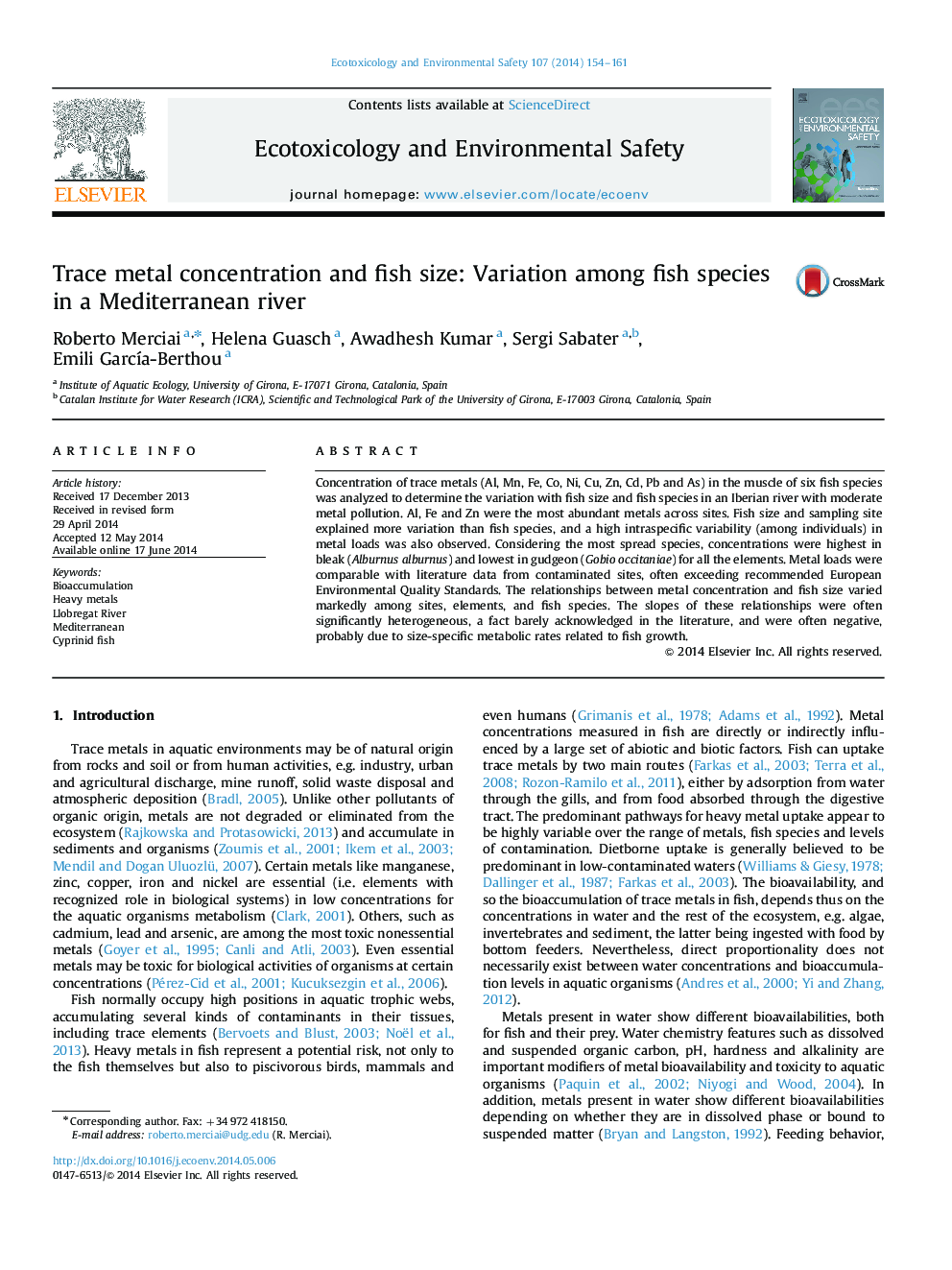| Article ID | Journal | Published Year | Pages | File Type |
|---|---|---|---|---|
| 4419961 | Ecotoxicology and Environmental Safety | 2014 | 8 Pages |
•Trace metal concentrations were analyzed in fish muscle from a Mediterranean river.•Negative relationships between fish size and metal concentrations were found.•Size–concentration relationships varied markedly among elements, species and sites.•Bioavailability, growth and feeding may account for the observed variability.
Concentration of trace metals (Al, Mn, Fe, Co, Ni, Cu, Zn, Cd, Pb and As) in the muscle of six fish species was analyzed to determine the variation with fish size and fish species in an Iberian river with moderate metal pollution. Al, Fe and Zn were the most abundant metals across sites. Fish size and sampling site explained more variation than fish species, and a high intraspecific variability (among individuals) in metal loads was also observed. Considering the most spread species, concentrations were highest in bleak (Alburnus alburnus) and lowest in gudgeon (Gobio occitaniae) for all the elements. Metal loads were comparable with literature data from contaminated sites, often exceeding recommended European Environmental Quality Standards. The relationships between metal concentration and fish size varied markedly among sites, elements, and fish species. The slopes of these relationships were often significantly heterogeneous, a fact barely acknowledged in the literature, and were often negative, probably due to size-specific metabolic rates related to fish growth.
